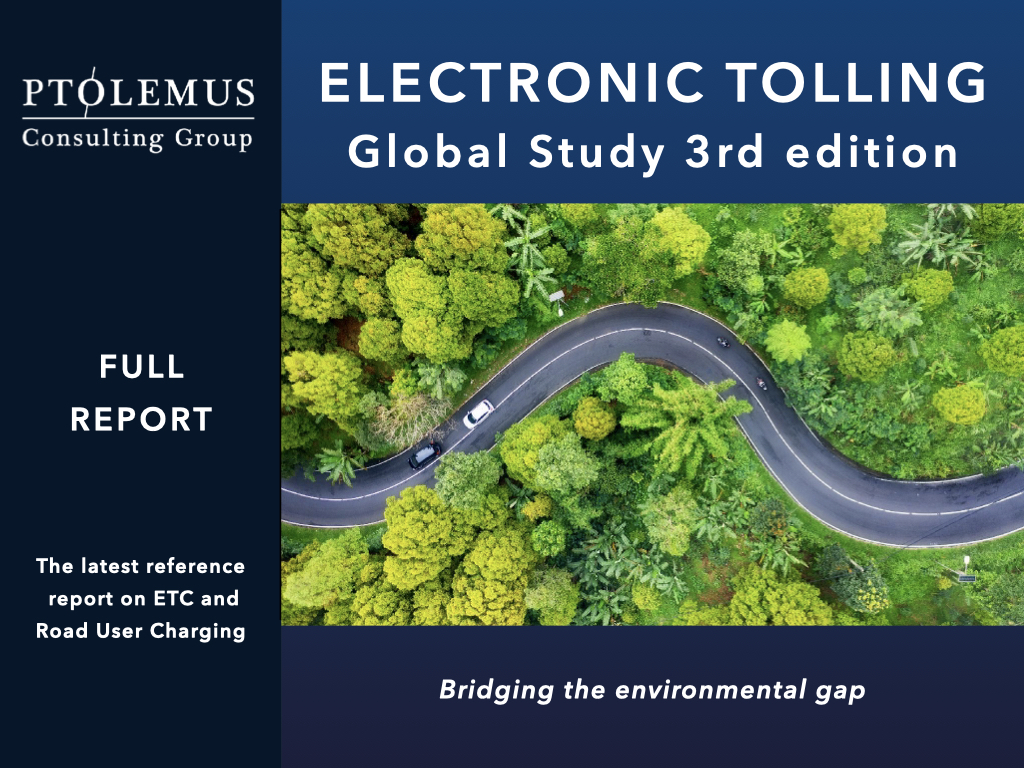In a post-COVID world, will a new Mobility Management System market emerge?

Around the world, the COVID-19 pandemic universally led to a fall in road traffic, as lockdown measures have significantly impacted our daily lives.
Whilst we are now experiencing a slow ‘return to normal’ situation, in most developed countries, traffic in cities is now close or above pre-pandemic levels.

Nonetheless, COVID-19 has left its mark and a ‘new normal’ seems to emerge. Among such ‘new normal’ initiatives, New York City is taking highly visible measures to start its landmark congestion pricing programme.
The scheme would mandate vehicle owners to pay a fee to enter Manhattan’s central business district (South of 60th Street).
Congestion pricing has already been implemented in several major cities around the world including London, Stockholm, Gothenburg and Singapore. Interestingly enough, the idea may in fact have emerged in New York, as the concept was first invented by Columbia University economist and Nobel prize winner William Vickrey.
The plan for the New York scheme was outlined in the 2019 MTA Reform and Traffic Mobility Act and recently appointed Governor Kathy Hochul just confirmed her full support to the programme, which is now entering an environmental review phase under the leadership of the Federal Highway Administration (FHWA).
The potential for the scheme looks very attractive, as not only it would reduce congestion, but also increase drivers safety, promote the use of public transportation, and – it is hoped – reduce emissions and noise… making the city a much more attractive and less stressful place to live in. Recent scientific studies executed in Stockholm have proven that its congestion pricing scheme has reduced the rate of asthma attacks among young children, and foresees wider long term health benefits.
Is this the beginning of a trend?
New York’s initiative is not isolated. Many American cities are evaluating such a scheme including Seattle and San Francisco.
The US government also just presented an ambitious Congestion Relief Program aiming at various goals including accelerating high occupancy vehicle pricing, cordon pricing, parking pricing and congestion pricing. As part of the programme, federal grants will be made available to states and metropolises.
The fact such a combination of decisions is happening during these post-pandemic times is striking. It occurs as more and more citizens express greater environmental awareness and place an increasing priority on their own health.
Is this the start for a new era for congestion management?
It might well be the case. At least such programmes are highly encouraging. But obviously the changes they bring will not come overnight.
While the technology is already available, implementation is and will remain highly complex. Plus, to make congestion pricing possible, cities must define the way vehicles will be charged, which is bound to be politically sensitive.
To be efficient, congestion pricing and other congestion relief technologies have the ability to be run dynamically and in coordination with traffic management systems (TMSs). For example, a congestion pricing system can provide traffic prediction information (based on the anticipated response to a price level) to an intelligent traffic management system to calculate how to best dispatch traffic into the network.
Furthermore, recent TMS evolution enables AI to be used in combination with real-time information and historical data to best predict future traffic flows. Trials have demonstrated high accuracy of these predictions up to 30 to 45 minutes ahead of time. Such Intelligent Traffic Systems (ITS) also have the ability to provide traffic forecasts to the congestion pricing system operator… which can therefore anticipate and best react through pricing adjustments.
Linking the two systems creates a considerable opportunity, and sitting in a car in a traffic jam could potentially become a thing of the past!
Is congestion pricing going to be the key to helping ITS systems best route traffic?
It is too early to say. Nevertheless it is becoming obvious that we are at a defining moment in history, as major decisions are being taken, especially in North America.
In our view, it is the time to look at the future of road mobility from a holistic standpoint, taking a unified look at 2 markets that traditionally have been observed and monitored separately, namely the Electronic Toll Collection (ETC) market and the Intelligent Traffic System (ITS) market.
Both could merge into an all encompassing (road) Mobility Management System (MMS) market.
Of course, the technical challenge and the high variety of technologies required to be brought together will limit the supply to only a few players. These would be companies that historically have been providing both ETC and ITS solutions, e.g. Conduent, Genvict, Kapsch, Mitsubishi Heavy Industries, Q-Free and TransCore.
These companies could differentiate from competitors that are only present in one market such as Cubic, Econolite, Siemens, SICE and Swarco though the move towards a unified MMS market could also foster alliances and mergers.
PTOLEMUS’ research on this global, integrated MMS market concludes that it could represent $8 billion today, with ETC representing 55% of the total. We also expect that it could almost double by 2030 to reach $15 billion (increasing the share of ETC to 59%).

The North American market stands today as the largest MMS market, thanks to the fast deployment of new ETC systems, and will continue to grow at a CAGR of 6%, to account for 17% of the worldwide MMS market in 2030.
We believe that other regions, notably Asia Pacific, will follow the same path as North America, driven by even more important infrastructure challenges and a fast growing level of wealth. According to our forecasts, China will account for 15% of the global MMS market in 2030, thanks to double digit growth.
Similarly, massive construction plans of new toll roads in South East Asia will enable the region to grow at an impressive CAGR of 15%, equivalent to 8% of the global MMS market in 2030 (split almost equally between ETC and ITS).
Overall, in 2030, we expect that APAC will have surpassed other regions thanks to the weight of China and India but also due to the need for global infrastructure management. The fast growing number of vehicles will also force these countries to adopt ITS solutions, bringing a CAGR of 14% for the APAC area (vs 4% in the USA).
In our view, APAC could make the move towards MMS even faster than North America and create the new paradigm for policing mobility.
Exciting times lay ahead.
Engage with PTOLEMUS and our mobility, ITS and ETC experts by emailing us at [email protected].

